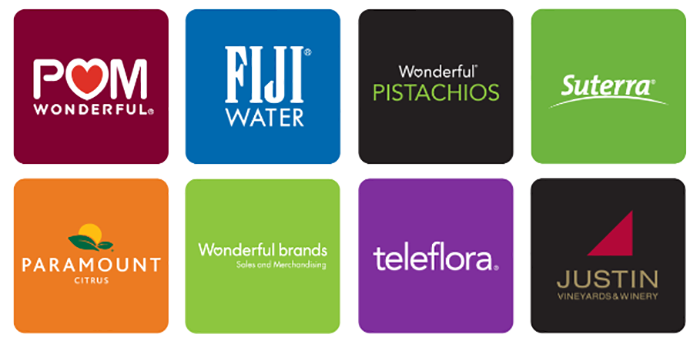
There’s not something like THE Sales & Operation Planning (S&OP) process. Companies are different in complexity, scale, collaboration maturity and much more. But also, within the same organization there could be various S&OP needs in different divisions or over time as well. The S&OP trajectory of Wonderful Brands is a fine example of the interaction between S&OP and revenue growth and illustrates how both can reinforce each other.
Let’s set the scene first. Wonderful Brands is part of The Wonderful Company, an industry leader in consumer goods with 9,000 employees and a yearly 4-billion-dollar sale. The American privately-owned company owes its success to selling healthy brands for a healthy way of life. Perhaps their Fiji Water, POM Wonderful juices or Wonderful Pistachios ring a bell?
Back in 2007, the company was so successful in growing and harvesting their products that they wanted to explore new markets. It was the start of their journey in the EMEA region and it’s also where this story about S&OP at Wonderful Brands starts. Heidi Vanderswalmen, Supply Chain Director at Wonderful Brands, shares their inspiring story with you.
One priority: growth
Entering the European retail market, Wonderful Brands was an unknown player. That is why, at the beginning, our ultimate goal was to gain foothold. We tried to deliver everything the customer asked for, since we really could not afford lost sales. On supply chain level, we were initially strongly driven from the US and we followed our customers. We started warehouses close to our sales markets and even set up a separate French organization. There wasn’t a formal S&OP process during this phase of our evolution since the main focus was ‘volume’.
The start-up becomes a scale-up
Five years later, Wonderful Brands had one foot on the ground in Europe. However, it was time for reflection since the volume-driven EMEA organization couldn’t submit positive figures yet. As an outcome, some hard decisions were made, such as reducing the amount of packaging and dissolving the French organization to work with a distributor instead. The EMEA organization also started importing raw products to save on import taxes. All those changes had a huge impact on our supply chain organization: we partnered with producers (e.g. for roasting nuts), packers and other third-party logistics, while making sure we guaranteed the quality. But despite all the decisions taken, we continued to face unwelcome financial surprises at the end of the year.
It’s at that point that I and my colleagues decided to set up an S&OP process. We'd all worked at multinationals before and understood therefore that S&OP can create the essential link between Finance, Sales and Supply Chain. Till then, we’d only used Excel. So, even after the S&OP process was installed, a large part of our meetings was dominated by discussions about the figures. Generating the figures was also an extremely time-consuming task. The need for a software tool that could support the S&OP process became crystal clear.
Road towards maturity
Wonderful Brands defined several criteria that the tool needed to meet and stood firm on those. The software should be affordable, flexible, allow to plan on item level, fast to implement and give quick results. The sum of all of our needs led to the Arkieva One Plan S&OP Software Suite with Solventure as implementator, especially because of the last two criteria.
We chose for a phased implementation at a rate of one module per year. Demand Planning was rolled out first, followed by S&OP Executive Reporting and budgeting and Production Planning. Recently Requirement Planning was added. As a result, along with the organization, the S&OP process matured year after year.
From volume to value
The introduction of S&OP software also meant the end of the discussions about the correctness of the numbers. Next to that, Wonderful Brands noted a significant decrease in their stocks, since they managed to fill in capacity based on product differentiation (e.g. slow/fast rotating). The biggest advantage is that the S&OP software supported the company to make the switch from volume-driven to value-driven decision-making: From my experience I know that really few companies make the link between their product volumes and financial results. To give you an example: if today a sales manager wants to offer his customer a product promotion, he inputs the expected volume and the kind of promotion into the system and directly sees the bottom-line impact, answering the question: what’s the expected return for the costs generated? Or in other words, what’s my Return on Capital Employed (ROCE)? This is an important financial metric to which we all have access now. With an effort of an hour, everyone gets insights about the impact on supply & production, the revenue and the profit margin.
Wonderful Brands EMEA grew in the past eleven years from a zero to a 40-million-dollar business. The last two financial years were closed with positive figures. S&OP was not the only success factor, but certainly contributed to this result. That’s why I’m willing to spread out the word and inspire other companies with our S&OP story."
Heidi Vanderswalmen shared her experience at the Gartner Supply Chain Executive Conference. You can download the presentation here.
Find out more about balancing service, cost and cash and why ROCE (Return on Capital Employed) is important for your S&OP process in our white paper.
These Stories on Demand Planning